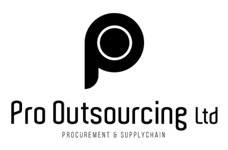Based on the GEP 2025 Procurement & Supply Chain Tech Trends Report
Procurement is no longer simply evolving — it is undergoing a structural reset.
The latest GEP 2025 Tech Trends Report paints a clear picture: traditional tools and legacy systems are being replaced by a new ecosystem of intelligent automation, AI-driven platforms and connected decision-making. This isn’t a wave of hype — it’s a deep, strategic shift affecting how procurement operates, creates value and leads within the enterprise.
At Pro Outsourcing, we’ve seen first-hand how digital transformation in procurement has moved from “nice to have” to mission-critical. This report reinforces the urgency — and the opportunity.
Agentic AI: Procurement’s New Strategic Enabler
We’re moving beyond scripted automation into a world where systems think, learn and act. Agentic AI is the next frontier — systems that classify procurement requests, engage suppliers, execute contracts and identify risks in real time, with minimal oversight.
Gartner forecasts that by 2028, a third of enterprise applications will include these AI agents. But Forrester offers a caveat: most firms won’t succeed without strong governance and deep technical capability. Agentic AI is powerful — but not plug-and-play.
This is a call for procurement leaders to upskill, engage with IT on equal terms, and ensure AI is aligned with compliance, ethics and strategic intent.
From Autonomous Execution to Strategic Intelligence
While autonomous procurement systems already manage transactional processes such as PO tracking, invoice matching and approvals, they follow pre-set rules. Agentic AI brings the missing layer: strategic interpretation and intelligent action.
It’s this interplay that drives performance — agentic AI determines what matters; autonomous systems deliver it consistently. This symbiosis enables procurement to act with agility, reduce manual burden, and focus more energy on value-generating activities such as supplier collaboration, risk planning and market adaptation.
Total Orchestration and Unified S2P: From Fragmentation to Flow
Procurement has long suffered from fragmented processes and disconnected systems. GEP’s concept of total orchestration offers a smarter way forward — building procurement as a connected, end-to-end system from intake to payment.
But orchestration only works if built on strong foundations. Bolted-on dashboards or workflow layers over outdated systems won’t deliver true transformation. A unified Source-to-Pay (S2P) platform, designed with intelligence at its core, is essential. It ensures everything flows — intake, sourcing, contracting, payments — with real-time visibility, embedded compliance and seamless execution.
Category Management Reimagined
Category managers are now strategic value drivers, not just cost controllers. The report highlights a shift towards data-led, forward-looking strategies. AI and analytics are turning category management into a core enterprise capability — one that aligns supply decisions with ESG targets, innovation goals and supplier performance insights.
This requires more than spend dashboards. It demands dynamic tools that model scenarios, guide decisions and help leaders respond rapidly to shifting conditions.
Low-Code Agility: Responding at the Speed of Change
In today’s volatile environment, procurement needs to adapt quickly. Low-/no-code platforms make that possible, enabling procurement teams to update workflows, automate approvals and integrate systems without long development cycles.
Gartner anticipates 70% of new enterprise applications will be built using these platforms by 2025. For procurement, it’s a pathway to greater autonomy, faster cycle times and stronger alignment between business requirements and technical delivery.
What This Means for Procurement Leaders
These aren’t siloed innovations. Agentic AI, autonomous systems, orchestration, low-code platforms and intelligent category tools are converging — and together they redefine what a high-performing procurement function looks like.
The real takeaway from GEP’s report? Leading organisations are no longer asking if they should invest in these capabilities — they’re asking how fast they can implement them as part of a unified strategy.
At Pro Outsourcing, we’re helping procurement and supply chain teams navigate these changes with confidence. Whether integrating digital platforms, managing the risk landscape, or embedding automation that reflects governance standards — we support clients in delivering real, measurable value.
Ready to assess whether your tech stack is powering procurement — or holding it back?
Feel free to get in touch or explore the full report here: GEP 2025 Tech Trends Report
#Procurement #SupplyChain #DigitalTransformation #AgenticAI #AutonomousProcurement #UnifiedS2P #LowCode #ProcurementTechnology #GEPReport #ProcurementTrends2025 #StrategicSourcing #FutureOfProcurement #SpendManagement #ProOutsourcing

